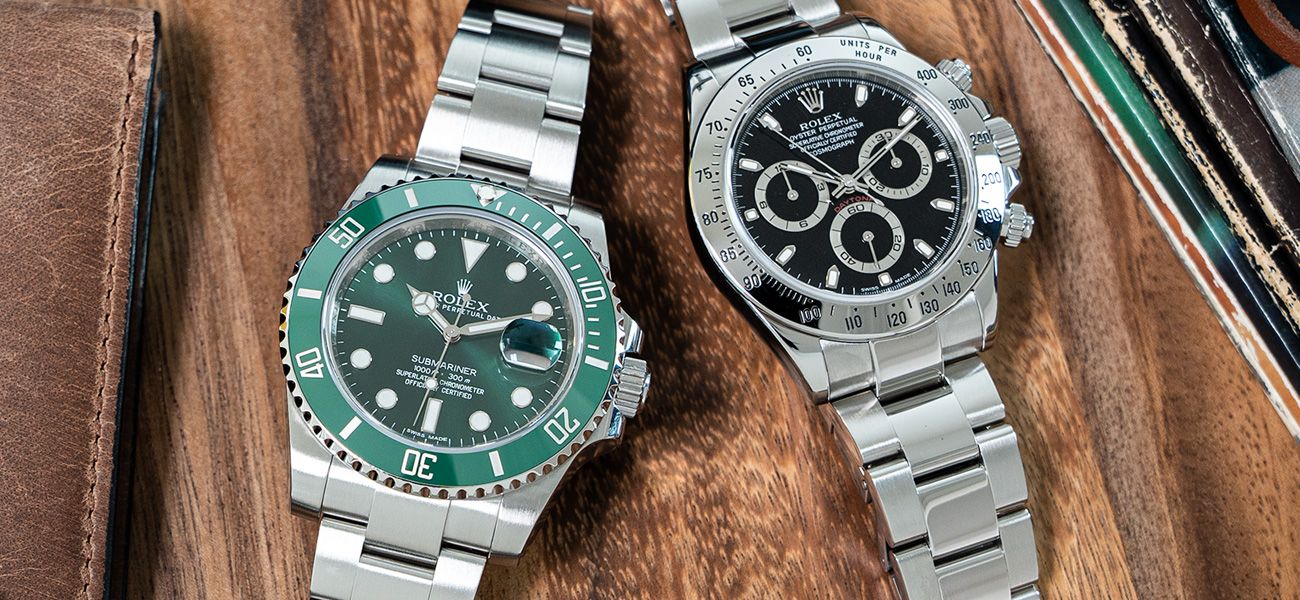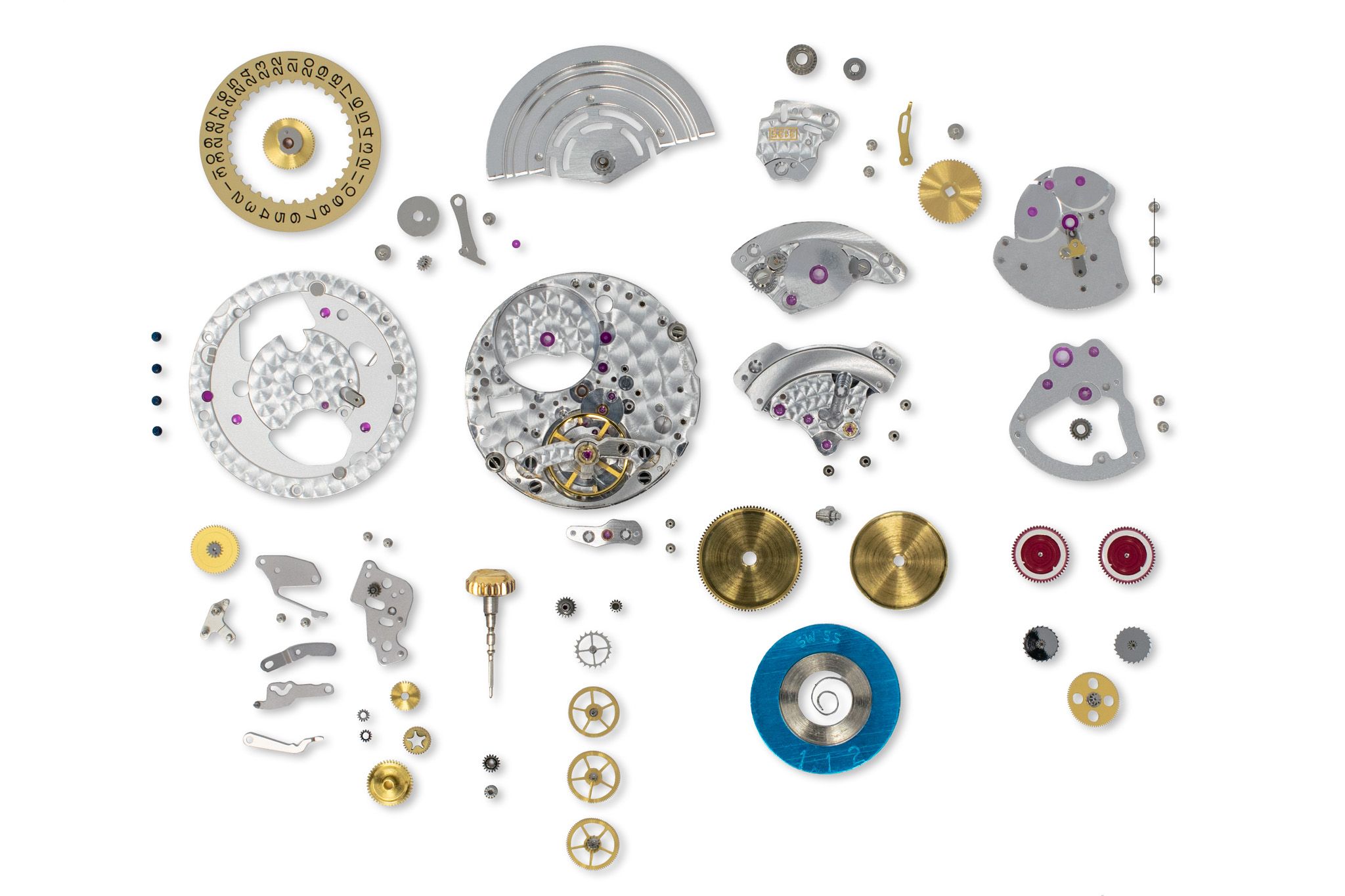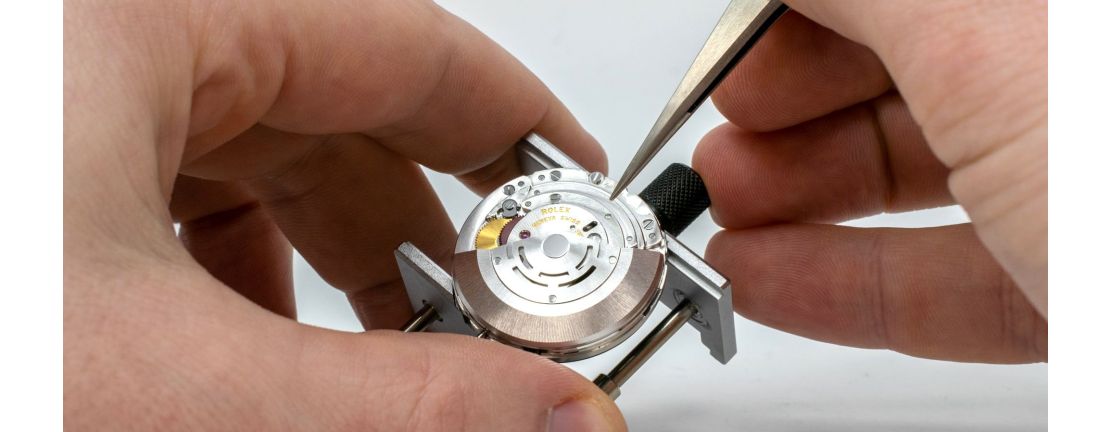For many, Rolex's unmistakable crown logo represents the pinnacle of watchmaking achievement, a symbol of precision, luxury, and style. But have you ever wondered what goes behind that famous crown?
As you can probably guess, it's not some haphazard assembly line churning out timepieces. We're talking about a process that takes about a year to produce a single Rolex watch. Let that sink in for a moment - while you're going through four seasons, a Rolex is slowly coming to life.
Rolex watchmakers forge their own gold alloys, assemble intricate movements with surgical precision, and scrutinize each tiny component under powerful magnification. This all happens not in one but four specialized facilities, each playing its own important role in creating each individual Rolex.
In this article, we'll take a closer look at how and where Rolex watches are made and share some fascinating details about the production process.
Beginnings - From London to Geneva
While Rolex is synonymous with Swiss watchmaking today, it might surprise you to learn that the company's roots actually lie in London, England. Founded in 1905 by Hans Wilsdorf and his brother-in-law Alfred Davis, the company initially imported Swiss movements to England and placed them in high-quality watch cases.
It wasn't until 1919 that Rolex moved its base of operations to Geneva, Switzerland, a city already renowned for its watchmaking expertise. This move marked the beginning of Rolex's journey to become the luxury watch powerhouse we know today.
Who Makes Rolex Watches?
Rolex watches are made by Rolex SA, a private company that has maintained its independence throughout its history. Unlike many luxury brands that have been absorbed into large conglomerates, Rolex remains privately held, allowing it to maintain strict control over its production processes and quality standards.
The actual manufacturing is done by highly skilled watchmakers, engineers, and craftspeople across Rolex's four Swiss facilities. These professionals are trained in-house to meet Rolex's exacting standards.
Production Numbers


It's estimated that Rolex produces around a million watches per year. At first glance, that might sound like plenty to go around. However, you'd be surprised when you turn up at your local authorized dealer to pick up a shiny new Rolex Submariner, only to find you're put on a waiting list that can stretch from months to years.
This scarcity and intense demand, especially for popular models, has led many enthusiasts to turn to the secondary market. Here, patience isn't a virtue—it's optional. Buyers willing to skip the wait and miss out on that "fresh from Geneva" experience can get their hands on that coveted Daytona or GMT-Master II right away.
Still, this limited availability, despite the substantial production numbers, speaks to their commitment to maintaining the exclusivity of the Rolex brand. It's a delicate balance between meeting demand and preserving the allure of owning a Rolex—a balance the company has mastered over its century-long history.
Where Are Rolex Watches Made?


Rolex watches are made entirely in Switzerland and are located across four state-of-the-art facilities. Each site has its own distinct specialization and expertise. While these four locations are the current hubs of Rolex production, the company is expanding its footprint with a fifth site under construction in Bulle, in the canton of Fribourg, set to open in 2029.
Acacias - Rolex World Headquarters
The Rolex world headquarters, located in the Acacias district of Geneva, is the command center of the company's global operations. This impressive facility, with its distinctive green glass façade, has been the home of Rolex since 1965 and has undergone several expansions over the years, most recently in 2022.
From this hub, Rolex oversees its worldwide activities. The Executive Board, along with administrative, commercial, and creative teams, all work under one roof. It's here that major decisions are made, from new watch designs to global marketing strategies.
But the Acacias site isn't just about boardroom meetings and paperwork. It's also where the final stages of Rolex watchmaking take place. Two state-of-the-art production units handle the delicate task of final assembly. Skilled craftspeople bring together components from other Rolex facilities, fitting dials, and hands to movements, casing them up, and attaching the iconic Rolex bracelets.
Perhaps most importantly, this is where each Rolex watch earns its stripes and undergoes its final baptism - the Superlative Chronometer certification. This battery of tests, more stringent than official standards, tests for precision, power reserve, waterproofness, and self-winding capability. Only after passing these rigorous examinations does a watch earn the right to bear the Rolex crown.
Plan-les-Ouates - Rolex's Forge
Also located in Geneva and opened in 2005, the Plan-les-Ouates facility is Rolex's fortress of precious metals. Six of its eleven stories are hidden underground, and it's where the process of Rolex's metallurgy happens. The site's six wings house foundries, workshops, and cutting-edge equipment.
Security here is no afterthought—they're guarding the heart of Rolex's gold production. This is where they forge their famous 18k gold alloys: classic yellow, elegant white, and their patented Everose gold.
Since 1985, Rolex has been using 904L steel, now dubbed Oystersteel, for their watch cases. This corrosion-resistant alloy, typically used in aerospace and chemical industries, finds its home in watchmaking right here.
The facility also houses a production unit for Rolex's exclusive RLX titanium, a grade 5 titanium alloy chosen for its strength, lightness, and finishing possibilities.
The Central Laboratory, directly linked to the production workshops, controls the quality of all Rolex metals. It uses some seriously impressive equipment, including a high-performance scanning electron microscope that can spot the tiniest imperfection in the metal. They're also the go-to folks for tribology (the science of friction, wear, and lubrication) and chemistry. Using sophisticated equipment, they conduct wear, accelerated aging, and resistance tests on bracelets and cases.
In essence, Plan-les-Ouates is where Rolex watches get their tough, shiny exterior - the first step in creating a luxury watch that's built to last.
Chêne-Bourg - Where Rolex Dials and Bezels Come to Life
In the outskirts of Geneva, the Chêne-Bourg facility is where Rolex watches get their distinctive faces. This site is dedicated to creating the dials, bezels, and other aesthetic elements that make Rolex instantly recognizable.
The creation of a Rolex watch dial is no simple task. It involves about 60 different operations, transforming brass or 18 kt gold into the iconic faces we associate with Rolex timepieces. Chêne-Bourg is where Rolex's gem-setters get to work, carefully placing diamonds, rubies, sapphires, and emeralds. The in-house gemology department rigorously checks each stone using equipment typically found only in independent labs.
Chêne-Bourg is also where the magic of color happens. In dust-free clean rooms, some dials receive special coatings using PVD (Physical Vapour Deposition) or lacquering techniques. The facility boasts impressive electroplating resources, a technology that not only colors but also protects the dial.
The final touches that give each dial its unique identity are all done by hand. This includes the transfer of inscriptions and motifs by pad-printing, the meticulous fitting of appliques, and the application of Rolex's exclusive Chromalight display.
The site is also home to Rolex's high-tech ceramic workshop. Here, the company produces its scratch-resistant Cerachrom bezels, including the groundbreaking two-color, single-piece versions that have become a hallmark of certain models.
Bienne - Home to Rolex's Inner Workings
The Bienne site, where Rolex movements are developed and manufactured, is at the foot of the Jura mountains in the Swiss canton of Berne. Here, the intricate components of Rolex movements - anywhere from 200 to nearly 400 for the most complex calibers are assembled by hand.
Bienne is a world of microtechnology, where precision is measured in microns - sometimes even tenths of microns. To achieve this level of accuracy, Rolex has invested in state-of-the-art equipment and controlled environment zones.
After assembly, each movement undergoes rigorous testing by COSC (the Swiss Official Chronometer Testing Institute) to earn its chronometer certification. Only after passing these tests is a movement ready to travel to Geneva for casing and final assembly.
How is a Rolex Made?


After discussing the four facilities and their essential functions, you have a general idea of what goes into manufacturing a Rolex watch. Now, let's take a step back and look at how a Rolex comes together from start to finish, following a more linear path. Here's how a Rolex Watch is made from the initial concept to the final quality check.
1. Conception and Design
Every Rolex begins as an idea. The design team at Acacias works on new concepts, often spending years perfecting a single model. They use advanced computer modeling and create numerous prototypes before settling on a final design.
This meticulous process isn't just for new creations. Many of Rolex's most famous watches have been around for decades, like the Submariner (introduced in 1953) and the Datejust (in production since 1945). The challenge lies in evolving these classics while maintaining their essence.
Designers experiment with subtle changes that can significantly impact a watch's look and function. They might update a case size, introduce a new material, or enhance the movement. Each change is carefully considered, honoring Rolex's heritage while pushing watchmaking forward.
2. Material Creation and Preparation
Once a design is finalized, Rolex creates the materials needed for the watch at its Plan-les-Ouates facility, which has extensive metallurgical capabilities.
Rolex produces its own alloys and compounds, each formulated to meet specific requirements:
Oystersteel: Rolex uses 904L steel, which they've dubbed Oystersteel. This high-performance stainless steel is highly corrosion-resistant and maintains an exceptional finish after polishing.
18k gold alloys: Rolex forges its own yellow, white, and Everose gold. Everose is their patented rose gold alloy, developed to preserve its color over time.
Cerachrom: This ceramic material, used for watch bezels, is extremely hard and resistant to scratches and UV radiation, ensuring long-lasting color.
The Central Laboratory at Plan-les-Ouates oversees the production of these materials, checking that each batch meets Rolex's exacting standards. By producing these materials in-house, Rolex maintains control over the quality and properties of every component in its watches.
3. Case and Bracelet Production
The Rolex watch begins to take its physical form. The process begins with casting the chosen metal into basic forms. These raw shapes then undergo a series of precise machining operations, gradually transforming into the intricate components that will make up the case and bracelet.
Each piece, no matter how small, receives meticulous attention from expert polishers, achieving the flawless, lustrous finish that Rolex is renowned for.
The process becomes even more intricate for models featuring precious metals or gems. Skilled Rolex watchmakers with years of experience and steady hands carefully set diamonds and other precious stones into the cases and bracelets.
The creation of the Oyster case, a cornerstone of Rolex's reputation for durability and water resistance, is particularly noteworthy. Each case is carefully machined and then tested to ensure it lives up to Rolex's stringent standards for a waterproof watch. The iconic fluted bezel, a Rolex signature, is also manufactured here.
4. Dial and Hands Manufacturing
At the Chêne-Bourg facility, Rolex brings the face of the watch to life through an intricate process of dial and hand manufacturing. The journey begins with brass or gold plates, which are stamped to form the basic dial shape. These are then treated with multiple layers of galvanic coatings and lacquer, creating the rich colors and depth that characterize Rolex dials.
The dial's features, such as hour markers and the iconic Rolex crown, are then applied. For some models, this includes setting tiny diamonds or other gemstones with painstaking precision. The famous Rolex text and any model-specific designations are pad-printed onto the dial, requiring absolute accuracy.
Simultaneously, the watch hands are crafted. Cut from thin sheets of metal, they are shaped, polished, and often filled with Rolex's proprietary Chromalight luminescent material for visibility in low-light conditions.
5. Movement Assembly
Hundreds of minuscule components, many thinner than human hair, now come together to create a mechanical marvel. Rolex watchmakers assemble these parts by hand, using their expertise honed over years.
Rolex movements include:
Blue Parachrom hairspring: Made from a patented niobium-zirconium alloy, it's highly resistant to magnetic fields and temperature variations.
Chronergy escapement: An optimized version of the Swiss lever escapement for improved energy efficiency and reliability.
Perpetual rotor: Rolex's self-winding mechanism gave rise to the "Perpetual" name in many of their models.
Paraflex shock absorbers: Increase the movement's shock resistance.
6. Final Assembly and Quality Control
The culmination of Rolex's manufacturing process takes place at the Acacias headquarters in Geneva. Here, the watch comes together in its final form.
Skilled technicians carefully encase the movement, attach the dial and hands with utmost precision, and then face Rolex's own Superlative Chronometer certification. Only after passing all these tests does a watch receive the coveted green Rolex seal, a symbol of its status as a Superlative Chronometer.
Finally, the watch is carefully packaged and ready to be sent to authorized dealers worldwide.
Wrapping Up
You might have initially been drawn to Rolex for its reputation or style, but now you understand the expertise and dedication poured into every watch. This insight into Rolex's manufacturing process should give you an even greater appreciation of these luxury timepieces.
Ready to find your own piece of Rolex history? Explore our selection of Rolex watches here.


